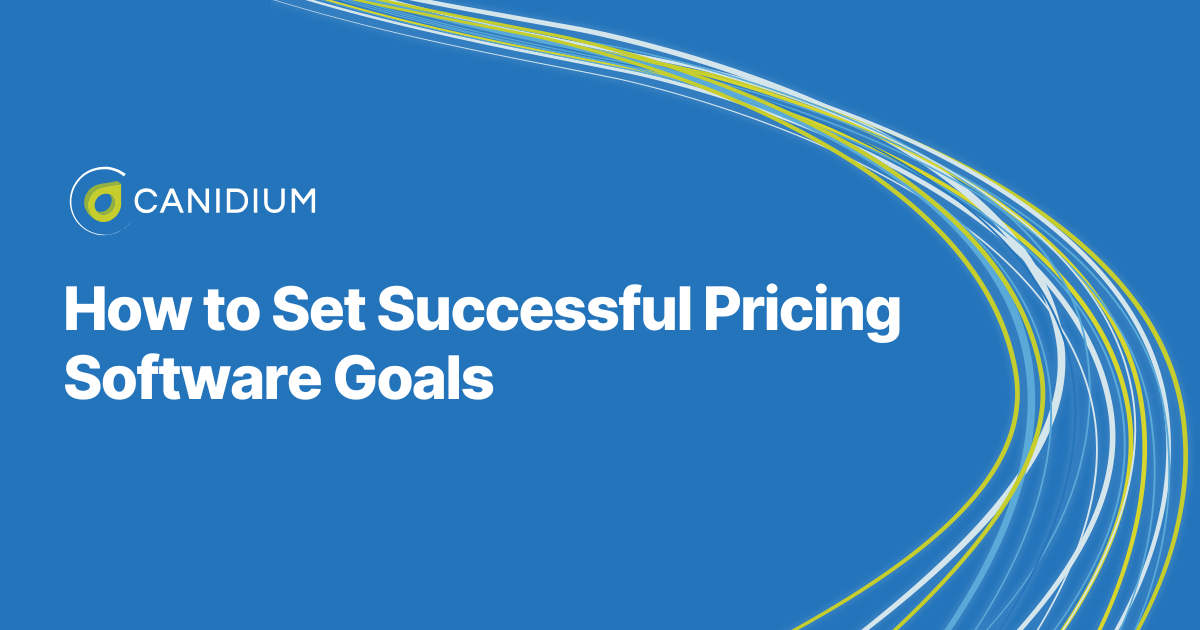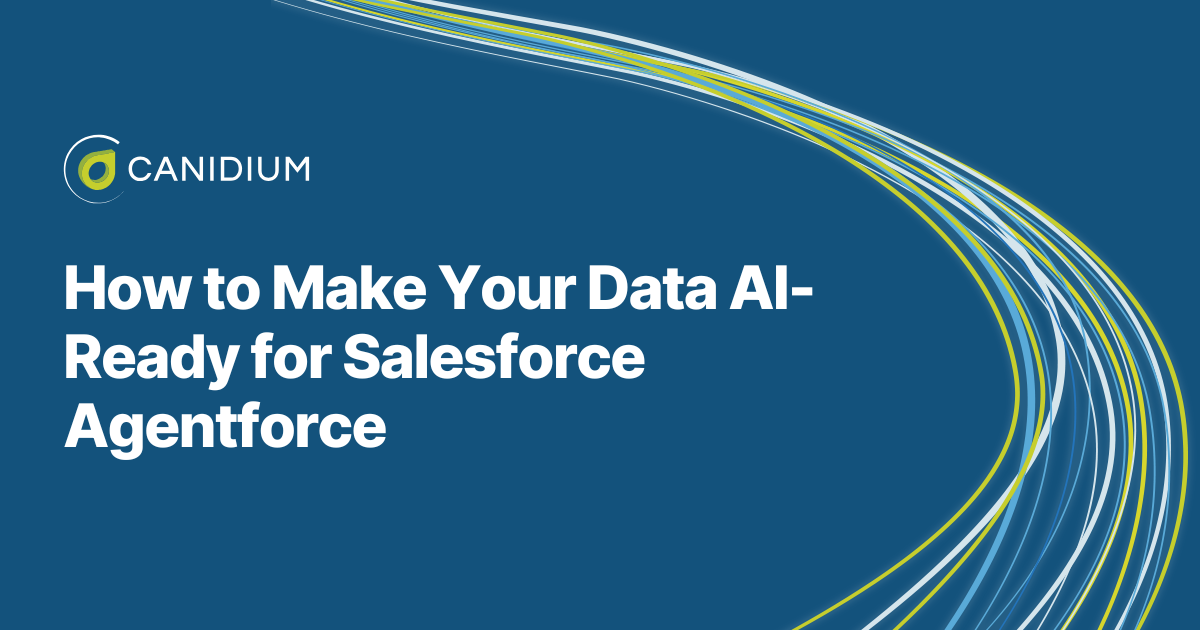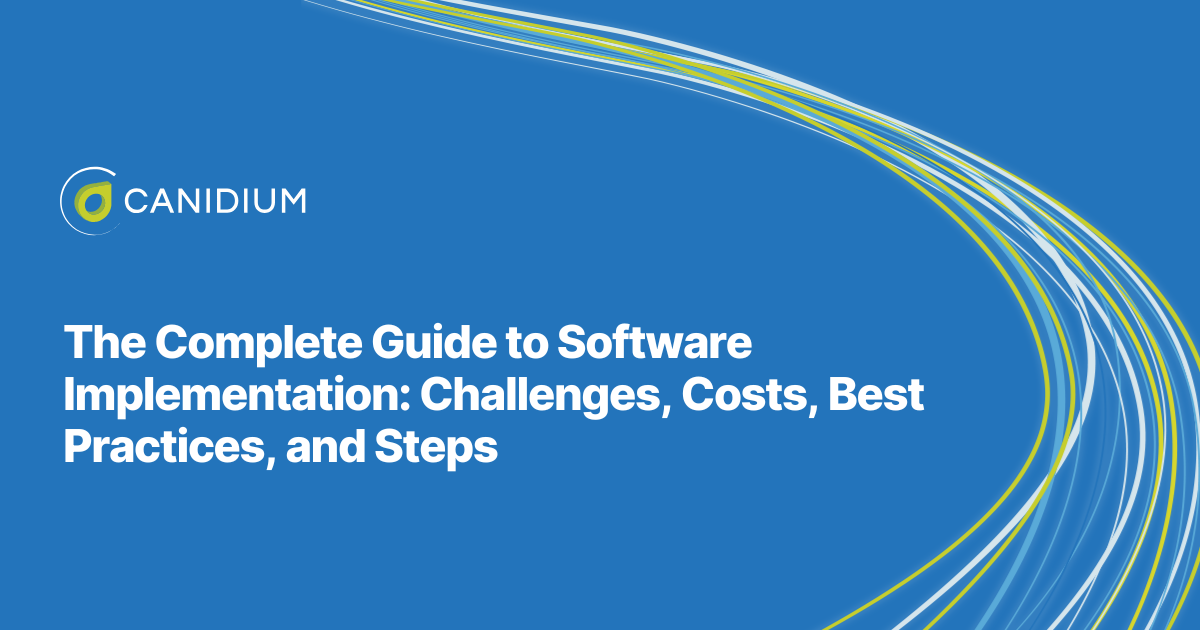It might seem obvious that you should have set goals before heading into a pricing software implementation project. Of course, the underlying reason you are interested in pricing software in the first place is to increase revenue. Does that not count as a goal?
Unfortunately, not entirely.
The business objectives you set need to map out timelines, KPIs, and pricing strategies. In other words, you need to know how you want to leverage price management software to achieve your overarching goal of increasing revenue.
Our team of expert pricing project consultants helps organizations align their price optimization software project with business goals. Our experience with the challenges and potential benefits of different pricing software configurations allows our clients to set more realistic and achievable goals that they may not have considered before.
In part 2 of our 8-part ongoing guide to ensuring your price optimization software implementation project is successful, we cover goal setting: the factors you need to consider, the step-by-step process of setting an objective, and the possibilities you may have overlooked.
- Successful Implementation Guide Series Information
- Factors You Cannot Overlook in Pricing Software Goal Setting
- How to Set Pricing Software Implementation Project Goals: Step-By-Step
The Step-By-Step Guide to Successfully Implementing Pricing Software Series
Before we dive into the goal-setting process, here’s more about this series.
These articles are designed to meticulously unfold the complexities of pricing software implementations. Our approach provides a clear roadmap from the project outset, introducing each crucial phase in detail, making it easier to absorb and apply the information effectively. This article represents the second installment in the series, covering Vision & Success.
Over the course of this series, we will cover the following topics:
.png?width=1920&height=1080&name=Pricing%20Software%20Implementation%20Project%20Success%20Factors%20(2).png)
Factors You Cannot Overlook in Pricing Software Goal Setting
Your business does not exist in a vacuum. Factors such as market dynamics, customer segmentation, product complexity, and internal team capabilities are pivotal in determining what is achievable. At the same time, the makeup of your existing infrastructure is a critical consideration during your pricing solution implementation.
Let’s take a closer look:
.png?width=1920&height=1080&name=Pricing%20Software%20Implementation%20Project%20Success%20Factors%20(3).png)
- Market Dynamics: Analyze the current state of your industry, including competitor pricing strategies, supply chain fluctuations, and consumer behavior trends. Understanding these dynamics ensures your pricing software aligns with the realities of your market.
- Customer Segmentation: Your pricing strategies may need to vary by customer group. Identify distinct customer segments and tailor goals to ensure maximum value extraction without alienating core customer bases.
- Product Complexity: If your product catalog is extensive or involves intricate pricing structures, your goals should account for the additional time and effort needed to configure the software effectively.
- Internal Team Capabilities: Assess your team’s expertise and availability. Overambitious goals can result in employee burnout or a poorly executed implementation. Include training and skill development plans to ensure your team is ready for new processes.
- Existing Systems and Integration: Consider whether the pricing software is compatible with your current systems. Ensure your goals address potential integration challenges and include milestones for overcoming them.
All of these factors, along with considerations unique to your organization, influence the process of implementing price management software and, consequently, impact the outcome of your implementation.
When setting goals, you need to account for these factors, their positive and negative consequences, and your ideal approach to pricing to extract the maximal value from your pricing software.
How to Set Pricing Software Implementation Project Goals: Step-By-Step
Goal setting on a granular level can be easy if you follow a tried and true procedure that delivers proven results. The following seven steps will help you create measurable and effective project goals that ensure that your ultimate project is successful:
Define Your Price Management Software Project Overarching Objectives
Begin with the big picture. What are the primary outcomes you wish to achieve? This is where high-level objectives such as expanding profit margins or increasing revenue come into play. However, you should also dig a little deeper to uncover additional goals you may want to build into your pricing strategies. For example, factors like customer retention are important when implementing new pricing structures. Alternatively, goals like expanding your market share can also be realized by strategically implementing price recommendations.
Regardless of your broad objectives, they need to be clearly defined. These all-encompassing goals will form the foundation for the entire project and set the tone for all subsequent actions.
Break Objectives into Measurable KPIs
The next step is to break down the sweeping statements you outlined in the first step into measurable actions. For instance, “increase revenue” could translate into “increase average order value by 10% within six months.” Alternatively, instead of a vague goal like “boost customer retention,” specify “increase customer retention rate by 15% over the next quarter.”
During this step, align your KPIs with the overarching objectives of the pricing software implementation. For example, if your goal is to optimize profitability, focus on KPIs like “reduce discounting errors by 25% within six months.”
Establish a Timeline
Define clear deadlines for achieving each KPI. Consider creating a phased timeline with short-term, mid-term, and long-term goals to maintain focus and measure progress. A structured timeline helps keep the project on track and ensures that each milestone builds toward achieving the overarching objectives.
Each phase should include specific milestones to evaluate progress and identify potential obstacles. For example, a short-term milestone could be “Complete training for 80% of the sales team within the first two months,” while a mid-term milestone might involve integrating the pricing software with customer relationship management (CRM) systems.
Involve Key Stakeholders
There are a variety of departments and roles within your company that will be impacted by a pricing software project. Involving these stakeholders will not only increase solution adoption rates post-implementation, but also provide valuable insights that can be leveraged in the configuration of your system. The most successful projects have project team members representing a cross-section of your business so their perspectives are taken into account–and they can go back to their respective departments and provide updates on how the project is going.
Begin by identifying all relevant parties, including sales, marketing, finance, IT, and executive leadership. Each group brings unique perspectives and expertise to the table, making their involvement essential for a comprehensive plan.
Conduct cross-departmental workshops or meetings to gather input on potential challenges and expectations. Encourage open discussions to uncover hidden risks or opportunities that may not be immediately apparent.
Stakeholder involvement is not a one-time activity. Maintain regular communication throughout the project to ensure alignment as goals evolve. Create a feedback loop where stakeholders can voice concerns or provide updates on their respective areas, helping the project adapt to new information or changes in the business environment.
Conduct a Feasibility Assessment
Evaluating whether your objectives align with the available resources, budget, and technology is a critical step in the planning process. Begin by conducting a detailed analysis of the resources at your disposal, such as your team’s technical expertise, the allocated budget, and the readiness of your existing systems for integration.
Consider the following elements:
- Resource Availability: Assess whether your team has the capacity and expertise required for implementation. Make sure that their managers are committed to allocating them for the time needed to devote to the project–and have sufficient coverage for their regular responsibilities. If not, factor in additional time for training or the need to bring in external expertise.
- Budget Constraints: Ensure your financial plan is realistic, covering both upfront costs and ongoing maintenance or upgrades.
- Technology Compatibility: Verify that your existing systems can integrate smoothly with the pricing software and identify any potential upgrades or customizations needed.
Document and Communicate Goals
Clearly documenting your top 3-5 objectives is essential for maintaining transparency and focus throughout the project. Use a structured format, such as a project charter or goal-tracking tool, to outline each goal, its timeline, and associated KPIs. Centralized documentation ensures that all stakeholders are aligned and have access to consistent and up-to-date information.
In addition, clarifying the roles and responsibilities of each team or individual is critical. This step specifies how each participant’s contributions tie into the broader objectives, promoting accountability and streamlined collaboration. Regular updates, such as weekly or bi-weekly meetings, are also key. These sessions provide opportunities to review progress, address concerns, and refocus efforts where needed. Ultimately, this comprehensive approach to clear communication will improve employee engagement and trust. Because 82% of knowledge workers say it’s important that their organization is transparent, but only 19% consider their company very transparent, this clear approach to project management is vital.
Review and Refine Goals Periodically
Regularly reassessing your goals as the project progresses is vital to adapt to changing conditions or unforeseen challenges. A static plan may become outdated, so flexibility is key to maintaining relevance.
Steps for periodic review and refinement include:
- Scheduled Check-Ins: Conduct formal reviews at predetermined intervals (e.g., monthly or quarterly) to evaluate progress against KPIs. One good place to always revisit the progress against the goals is in a monthly Steering Committee Meeting.
- Data-Driven Insights: Use data collected from the software’s early outputs to identify areas of improvement or unexpected opportunities.
- Stakeholder Feedback: Gather input from key stakeholders to address their observations and refine objectives based on their practical experiences.
- Adjust Timelines and KPIs: Update timelines or modify KPIs as necessary to reflect market conditions, business priorities, or project performance changes.
How to Set Successful Goals For Your Pricing Software Implementation
Establishing clear, realistic, and actionable goals is the foundation of a successful pricing software implementation. This process goes beyond merely aiming to increase revenue or improve business efficiency; it requires a thorough understanding of your business landscape, including market dynamics, customer segmentation, product complexity, and internal capabilities.
Breaking down broad objectives into a few specific, measurable KPIs ensures progress can be tracked effectively while setting phased timelines with milestones maintains focus and accountability. The active involvement of key stakeholders provides critical insights and fosters alignment across departments, ensuring the project remains grounded in organizational priorities. Conducting a feasibility assessment aligns goals with available resources, budgets, and technology, mitigating risks and increasing the likelihood of a smooth implementation.
Want to learn your estimated pricing software implementation project’s ROI? Check out this guide.








